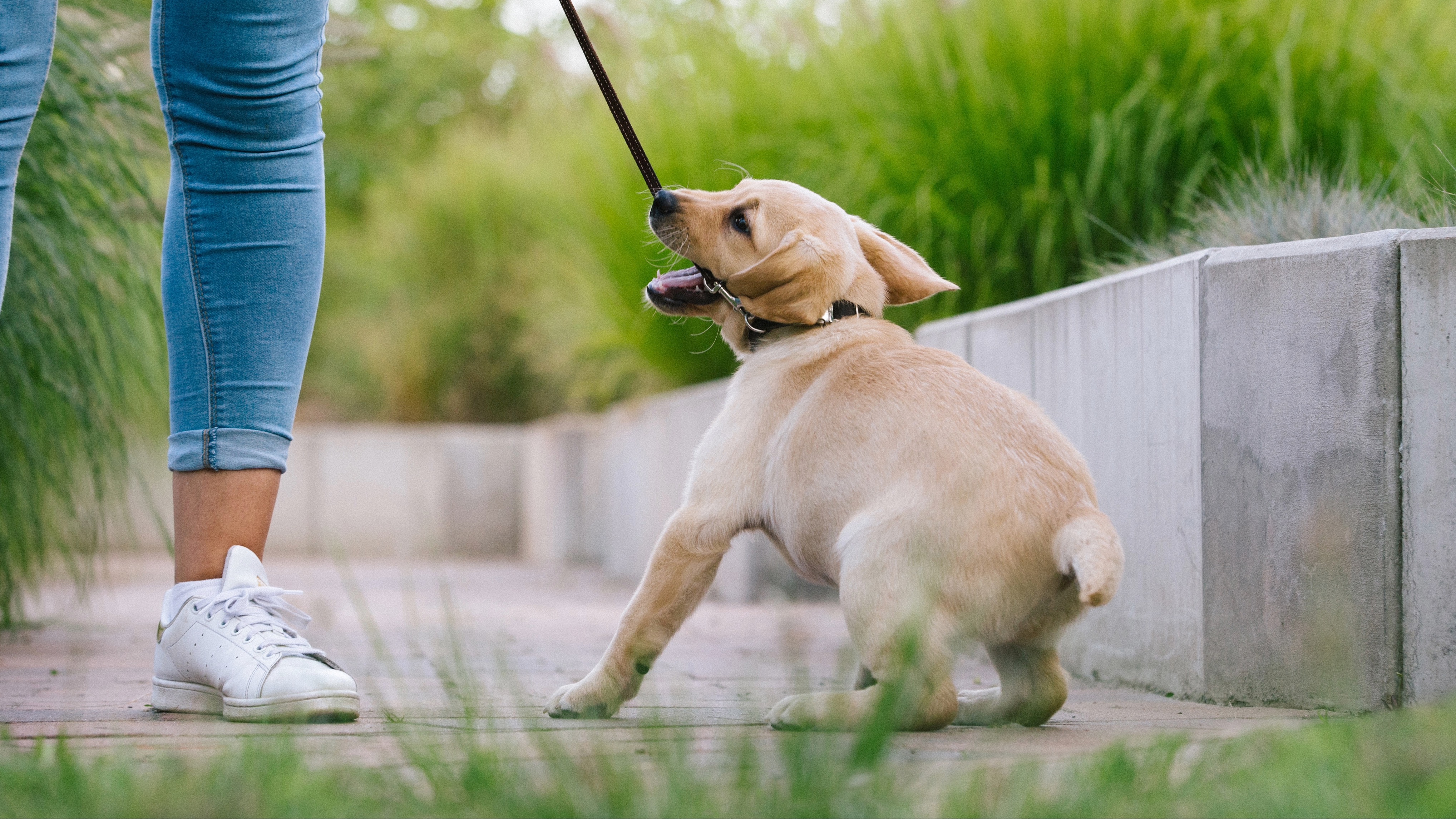Try this trainer's simple tips to prevent reactivity (and find out what behaviors to reward!)
All dogs are different, but this advice will help you reduce the risk of reactivity as your dog grows up.

Reactivity is something that many dog parents will have to manage at one time or another. But while every dog is different, of course, there are things we can do without realizing it that might cause our dogs to be reactive.
For example, your dog may love playing with the best dog toys and other dogs too, but too much play when your dog’s a puppy can lead to more reactivity when they get older — and we don’t always realize this.
In a recent Instagram post, Juliana DeWillems, the owner and head trainer of JW Dog Training & Behavior, has explained what we can do to prevent reactivity — as well as some of the behaviors to reward!
A post shared by JW Dog Training & Behavior Consulting (@jwdogtraining)
A photo posted by on
DeWillems explains, “While there are a number of factors that influence a dog’s reactive behavior and a lot of them are out of our control, we can control a young dog’s experiences around other dogs.”
So, what causes reactivity in dogs? Well, DeWillems continues in her caption, “When a young dog’s life is full of nothing but play, play, play with other dogs, that can, unfortunately, cause a lot of frustration-based reactivity as they get older.”
Play is important, as it helps with socialization and meets your pup’s social needs, but you want to balance it with teaching and reinforcing desirable behaviors — for example, teaching your dog that the sight of another dog is a cue for them to engage with you. You want them to pay attention to you and continue what they’re doing even when another dog is around.
DeWillems adds, “Another scenario is the dog who is nervous or uncomfortable around other dogs but is continuously meeting them on leash and having unpleasant experiences.”
Get the best advice, tips and top tech for your beloved Pets
While a puppy in this situation may not be reactive just yet, as they get older they’ll become more proactive about keeping other dogs away by barking and growling. To help both you and your pup, DeWillems recommends teaching your dog that when they see another dog, they should stay next to you until you let them know what their next steps are.
And, she outlines some desirable behaviors in your pup to look out for and reward when they see another dog:
- Looking at you
- Remaining close enough to you that the leash is loose
- Looking at the other dog quietly
- Turning away from the dog
- Responding to their name, familiar cues, or ‘kissy’ noises
- Sniffing the ground
- Walking past or away from the dog
She explains, “When we focus on what we do want from our dog in the presence of other dogs, we see a reduction in pulling, lunging, and barking behaviors.”
You can do everything right and still have a dog who struggles with reactivity, but by taking on DeWillem’s advice, you can at least control some of the potential contributing factors. You might find this article from someone in a similar situation useful, too: My dog’s leash pulling made walks miserable until I helped her reactivity, here’s how.
West Paw Toppl Dog Toy
$23.96 from Chewy
A treat dispensing puzzle that can be filled with kibble, peanut butter, cheese chunks or smashed banana, this toy is ideal for giving your dog's brain a good workout.

Adam is a freelance journalist specialising in pets, music and culture, and mental health and wellbeing. He investigates and writes the large majority of news on PetsRadar, and collaborates with veterinary experts to produce informative pet care content.
Adam has a journalism degree from Southampton Solent University and a masters degree in Magazine Journalism from Cardiff University. He was previously senior editor at dog advice website DogTime.com, and has also written for The Independent, GoodToKnow and Healthline.
He owns two rescue cats, Bunny and Dougie, and has also previously had a rabbit, fish and Roborovski dwarf hamsters.

